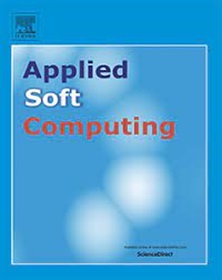增强二类模糊集不确定性足迹下的模糊分类规则
IF 6.6
1区 计算机科学
Q1 COMPUTER SCIENCE, ARTIFICIAL INTELLIGENCE
引用次数: 0
摘要
本文提出了一种从不确定性区域中选择嵌入式1型模糊集(ET1 FSs)来提高基于模糊规则的系统分类精度的新方法。该方法包括三个阶段:(1)从预定义的语言变量中学习Type-1模糊规则;(2)使用区间Type-2模糊集(IT2 FSs)生成FOU区域;(3)使用adaboost集成方法,将多类问题分解为二元分类任务,并通过遗传算法迭代选择ET1 FSs。该方法依靠IT2 FSs对分类边界进行灵活划分,在解决高维多类问题的同时,提高了准确率。在12个UCI数据集和3个图像分类任务上使用预训练卷积神经网络的特征进行了实验。选择这些数据集是为了确保维度和类别分布的多样性。与几种最先进的分类方法的比较分析表明,IT2 FSs可以有效地用于开发准确的分类系统。此外,本工作还通过调优FOU大小(可区分性)和调整规则数量来分析复杂性和可解释性之间的权衡。结果表明,平衡FOU大小和规则计数比单独使用任何一种方法都能获得更好的精度增益。在此基础上,提出了几个合适的权衡区域及其参数。本文章由计算机程序翻译,如有差异,请以英文原文为准。
Boosting fuzzy classification rules under footprint of uncertainty of type-2 fuzzy sets
This paper presents a novel approach to improving classification accuracy in fuzzy rule-based systems by selecting Embedded Type-1 Fuzzy Sets (ET1 FSs) from Footprint of Uncertainty (FOU) areas. The method consists of three stages: (1) learning Type-1 fuzzy rules from predefined linguistic variables, (2) generating FOU areas with Interval Type-2 Fuzzy Sets (IT2 FSs), and (3) using the adaboost ensemble method, where multi-class problems are decomposed into binary classification tasks, and ET1 FSs are iteratively selected via genetic algorithms. By relying on IT2 FSs for the flexible partitioning of classification boundaries, the method enhances accuracy while addressing challenges in high-dimensional and multi-class problems. Experiments were performed on 12 UCI datasets and three image classification tasks using features from pre-trained convolutional neural networks. These datasets were selected to ensure diversity in dimensionality and class distribution. Comparative analyses with several state-of-the-art classification methods demonstrate that IT2 FSs can be effectively used to develop accurate classification systems. Additionally, this work analyzes trade-offs between complexity and interpretability by tuning FOU size (distinguishability) and adjusting the number of rules. The results show that a balanced FOU size and rule count yield better accuracy gains than either alone. Furthermore, several suitable trade-off regions with their parameters are presented.
求助全文
通过发布文献求助,成功后即可免费获取论文全文。
去求助
来源期刊

Applied Soft Computing
工程技术-计算机:跨学科应用
CiteScore
15.80
自引率
6.90%
发文量
874
审稿时长
10.9 months
期刊介绍:
Applied Soft Computing is an international journal promoting an integrated view of soft computing to solve real life problems.The focus is to publish the highest quality research in application and convergence of the areas of Fuzzy Logic, Neural Networks, Evolutionary Computing, Rough Sets and other similar techniques to address real world complexities.
Applied Soft Computing is a rolling publication: articles are published as soon as the editor-in-chief has accepted them. Therefore, the web site will continuously be updated with new articles and the publication time will be short.
 求助内容:
求助内容: 应助结果提醒方式:
应助结果提醒方式:


